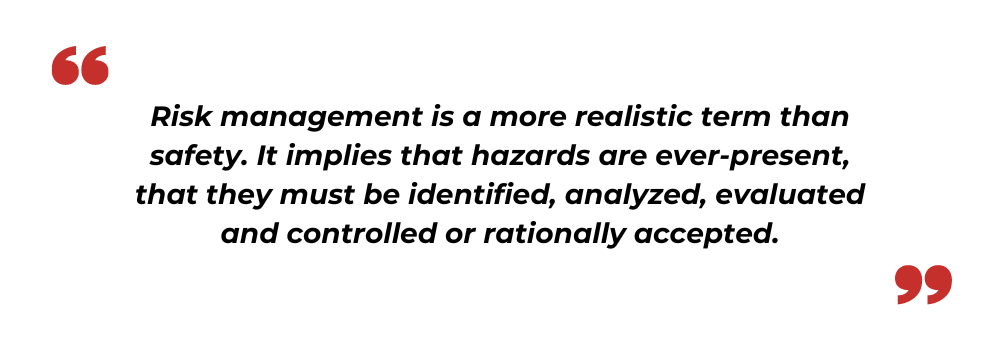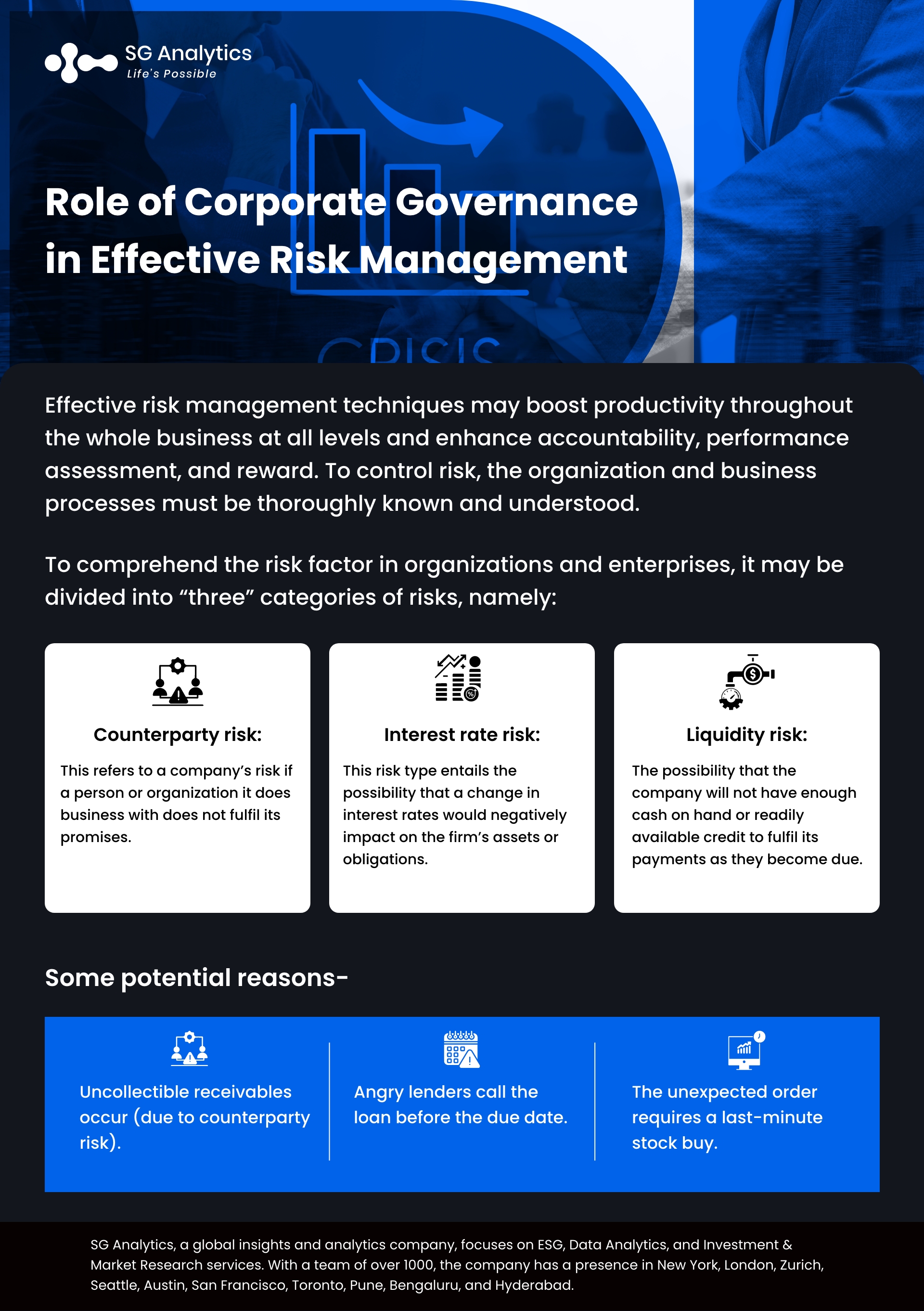The world is changing, and more often than not, it evolves at a rate that can be hard to keep up with. Organizations these days are looking into their risk management strategies these days, and if you are running a company of your own, you need to have a solid understanding of how financial risks work.
This blog will walk readers through the basics of corporate financial risk management and provide insights into what it means for your company's overall growth moving forward.
What Is the Risk Involved Here?
In today's environment, risk is something that every organization deals with daily. When significant corporate failures occur, their effectiveness in mitigating such risks becomes painfully clear. Thus, it is evident that "failure" frequently results from subpar risk management techniques. Risk management is a word used to describe the procedures intended to help businesses identify, assess, and respond to their risks to raise the likelihood of success and lower the possibility of failure.
It is a given that "effective risk management" helps a company or organization prove its compliance with corporate governance rules and reassures shareholders, customers, workers, and society at large that a business is being managed properly. Risk management is pertinent and crucial for every firm, big or small.
Effective risk management techniques may boost productivity throughout the whole business at all levels and enhance accountability, performance assessment, and reward. To control risk, the organization and business processes must be thoroughly known and understood. When a company wants to raise the value of its stock per share, it must carefully choose and manage the risks it takes. This is the responsibility of the board of directors and management.
Also Read: Behavioral Finance Perspective in the Investment Industry

Role of Corporate Financial Risk Management
A business's related risk has a relatively wide ratio. To comprehend the risk factor in organizations and enterprises, it may be divided into "three" categories of risks, namely:
1- Counterparty risk:
-
This refers to the risk that a company faces if a person or organization it does business with does not fulfil its promises.
-
Debtors breaking the terms of their bank loans.
-
The acquisition of a contract with house sellers "fails to close" for prospective purchasers.
-
Domino-like effect (must take counterparty risk into account)
It is crucial to prevent the concentration of lenders, vendors, consumers, etc., to reduce this risk (i.e., diversify). A big corporation will find it easier to accomplish this than a startup or small business.

2- Interest rate risk:
-
This risk type entails the possibility that a change in interest rates would negatively impact on the firm's assets or obligations.
-
If a firm has $100 million in outstanding floating-rate debt, increasing interest rates will result in higher interest costs for the company.
-
As bond prices rise and interest rates fall and vice versa, the value of the investor's fixed-rate bonds will decrease if the interest rate increases.
-
The risk associated with interest rates increases with smaller coupon payments and a longer time until bond maturity.

This risk can be reduced by balancing the duration (weighted average cash flows) and the mix of fixed- and floating-rate instruments across assets and liabilities. A task that is simpler for big financial organizations to complete than for smaller, non-financial ones.
3- Liquidity risk:
The possibility that the company will not have enough cash on hand or readily available credit to fulfil its payments as they become due.
Some potential reasons
-
Uncollectible receivables occur (due to counterparty risk).
-
Angry lenders call the loan before the due date.
-
The unexpected order requires a last-minute stock buy.
It is important to realize that corporate boards and audit committees should first identify and confirm the specific risk involved before thinking about ways to reduce or eliminate those risks. This is because there are many different types of risks that corporations and businesses face.
"The board should establish formal and transparent arrangements for considering how they should apply the corporate reporting, risk management, and internal control principles and for maintaining an appropriate relationship with the company's auditor," the "UK Corporate Governance Code Main Principle" states in this regard.
Also Read: Biggest BFSI Trends to Watch out for in 2022
Designing Corporate Governance Risk Principles for the Present and the Future
The concepts of corporate governance might take many different shapes. For the foreseeable future, modifications will probably be erratic and constantly changing. Notwithstanding significant changes, corporate governance concepts must be organized, integrated, and balanced. The functions of current compensation systems and how they relate to financial and non-financial risk will continue to be examined by corporations. Recent risk failures have shown us that all organizations are susceptible and must rigorously plan for high and low probability significant risks.
Corporate executives' current compensation plans frequently reflect how effectively they handle financial risk concerning internal controls and audit procedures. The new benchmark for pay structures may reward managers for having a great understanding of risk management as well as the performance of their companies. This suggests that businesses may start lowering financial rewards for managers who frequently take excessive risks, such as stock options.
Companies may consider how successfully managers manage reputational and financial risk management and how strategic risks appear as operational risks. Let us examine this in more detail to see what it would entail in real life.
Corporate leaders consider developing standards the first step in novel risk management methods. Many business leaders are urging their organizations to establish standard risk terminology that everyone in the organization will use. They will be helped when they develop new risk management guidelines if they use generally used phrases. In turn, when they create new standards for risk management, they will assist them in striking a balance between qualitative and quantitative viewpoints.

A broader view of rules that are more relevant and practical for all sorts of firms, including banks and other financial institutions, may be how corporate governance develops in the future. Examples of risks that apply to most firms include outsourcing and supplier-related risks, which have not received much attention in governance in the past.
Furthermore, even when the risk is minimal, corporate governance in the future can emphasize catastrophic risk more. Despite the minimal likelihood of a disaster, it does not always follow that one will not occur. In accordance with sound corporate governance principles, it may be possible to be prepared to handle any crisis.
Also Read: 71% BFSI Firms Use Big Data Analytics to Gain Competitive Advantage – It’s Uses in Equity Research
 Wrapping Up Corporate Governance and Risk Management
Wrapping Up Corporate Governance and Risk Management
The financial world underwent rapid upheaval after the financial crisis of 2008, and developments have continued ever since. Technology has continued to grow simultaneously, opening up numerous new opportunities and complicated concerns. Improvements in corporate governance should have accompanied these significant changes in the financial and business environment, but this has not happened quickly.
Companies must keep in mind their main objectives, which are to generate the maximum value for their customers and shareholders, while new corporate governance rules start to take shape. Stewardship is at the heart of the connection between risk management and corporate governance.
With offices in New York, Austin, Seattle, London, Zurich, Pune, and Hyderabad, SG Analytics is a leading research and analytics company that provides tailor-made services to enterprises worldwide. If you're looking to make critical data-driven decisions, decisions that enable accelerated growth and breakthrough performance, contact us today.










